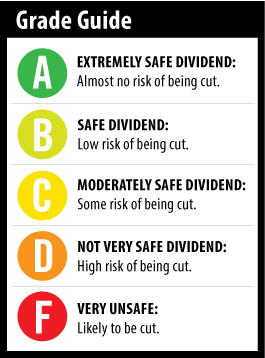When I see a double-digit yield, I get nervous. Kind of like Ralph Kramden on The $99,000 Answer.
Usually, when a company pays a dividend yield that high, it’s not particularly safe.
[ad#Google Adsense 336×280-IA]It could be cut at any time.
So when I looked at Seadrill Limited (NYSE: SDRL) and its 11.1% yield, you can understand why I was skeptical.
Seadrill provides deep-water drilling rigs to oil companies.
They can command up to $500,000 per day per rig, though that figure is expected to fall as oil companies cut production.
But despite what’s expected to be a difficult 2014 for the rig providers, I’m not worried about Seadrill’s dividend.
There are six reasons why:
- The company just raised the dividend $0.03 to $0.98 in February. It’s the third consecutive quarterly increase. Usually, companies on the verge of cutting the dividend don’t continue to raise into the cut.
- Cash flow grew 6% in 2013, while earnings before interest, taxes, depreciation and amortization (EBITDA) are projected to grow 20% in 2014.
- The current order book of $20.2 billion is the highest in the company’s history.
- It has 70% of its 2015 capacity already booked.
- Management expects no reduction in cash flow even if expected industry setbacks occur.
- Seadrill has a special reserve fund.
This last reason bears special attention.
Seadrill’s management set up a special reserve fund of $0.16 per share that will go to shareholders in some way. Management has not yet decided whether it will be a lump sum dividend, a quarterly dividend of $0.04 for one year, a stock buyback, or some combination of a dividend and share repurchase.
So there is very likely another dividend raise coming at some point this year. At the worst, if business ever fell off a cliff, I’d expect management to use those reserves to ensure the dividend is not cut.
Seadrill has boosted its dividend every year since it started paying one in 2010 and has raised it in 10 of the 15 quarters it has paid one.
 Wall Street projects cash flow from operations will jump 78% over the next three years from last year’s total of $1.7 billion.
Wall Street projects cash flow from operations will jump 78% over the next three years from last year’s total of $1.7 billion.
By 2016, analysts believe Seadrill’s cash flow will total $3 billion per year.
Management is very aware that yield is a critical component to why shareholders own the stock and, with a reserve in place, it’s hard to fathom a dividend cut in the near term.
Any stock that pays an 11% yield should be watched closely to make sure its cash flows can continue to support the dividend.
But while Seadrill’s high yield initially made me feel like the payout could be in deep water, the health of its business and its reserve fund act as a life jacket to keep the dividend afloat.
Dividend Safety Rating: A
— Marc Lichtenfeld
[ad#DTA-10%]
Source: Wealthy Retirement


